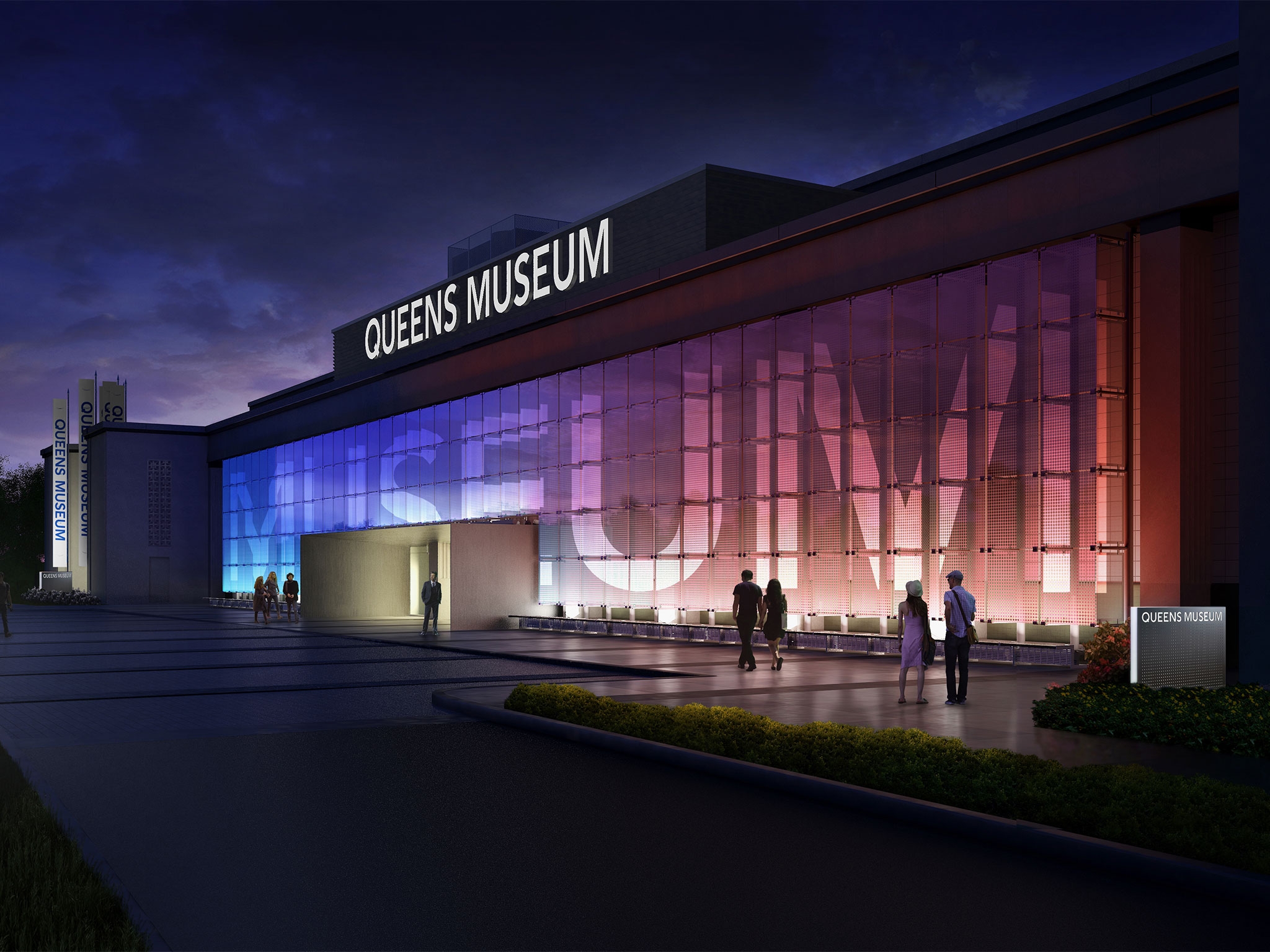Queens Museum Reimagined

“Yes, you’ve come a long way baby.” The baby in this case is the Queens Museum. It reopened last month to rave reviews, following a $69 million renovation that doubled the museum’s footprint to 105,000 square feet. I couldn’t believe my eyes when I walked in the door, remembering vividly how it all began in 1972 in a small space on one side of the old New York City Pavilion in Flushing Meadows-Corona Park, the only remaining building from the 1939 World’s Fair. Now, the museum space is spectacular with an enormous window facing the Unisphere built for the 1964 World’s Fair, and a brilliantly lighted facade facing the Grand Central Parkway – saying to thousands of passing motorists that the Queens Museum has arrived. Inside, under the leadership of Tom Finkelpearl, the museum has remained true to its founders’ vision of reflecting the global nature of Queens and the sensibility of an “alternative” to other more established institutions in other boroughs.
The Queens Museum was imagined by a bunch of idealistic community folks, myself among them, who lamented the idea that unlike the other boroughs, Queens had no museum to call its own. Gosh, even Staten Island had its own museum. It was time for equity. Six community boards rallied around the plan. As the Chair of Planning Board 7 in Queens, I and my colleagues trekked through the building amid the rubble, along with city officials trying to convince them that a museum was a good use for the site, and that the Panorama of the City of New York, a 1964 true-to-scale model of the five boroughs, could be saved. Over the subsequent 40 years, many community, civic, corporate and political leaders invested their time, support, funding and influence to making the place truly responsive to the two million people who live in Queens.
Who would have thought at its humble beginning that such an internationally respected institution could evolve in only 40 years. Reflecting on it, I thought about the Katonah Museum, approaching its 60th anniversary in 2014 having started in a small space in the top story of the village library. It is now in its very own Edward Larrabee Barnes building. Like the Queens Museum, it began as a good idea propelled by a cadre of grassroots supporters. Both museums are similar in that they primarily present works from artists, collectors and other institutions as opposed to building collections of their own, although the Queens Museum has a cool collection of World’s Fair memorabilia and an equally cool collection of Tiffany glass made where else(?) in Corona Queens.
Over many years working in this field we call “the arts,” I have watched ordinary folks building the arts in their communities brick by brick with passion and fortitude. To me, it is a special kind of magic.


Connect with Janet